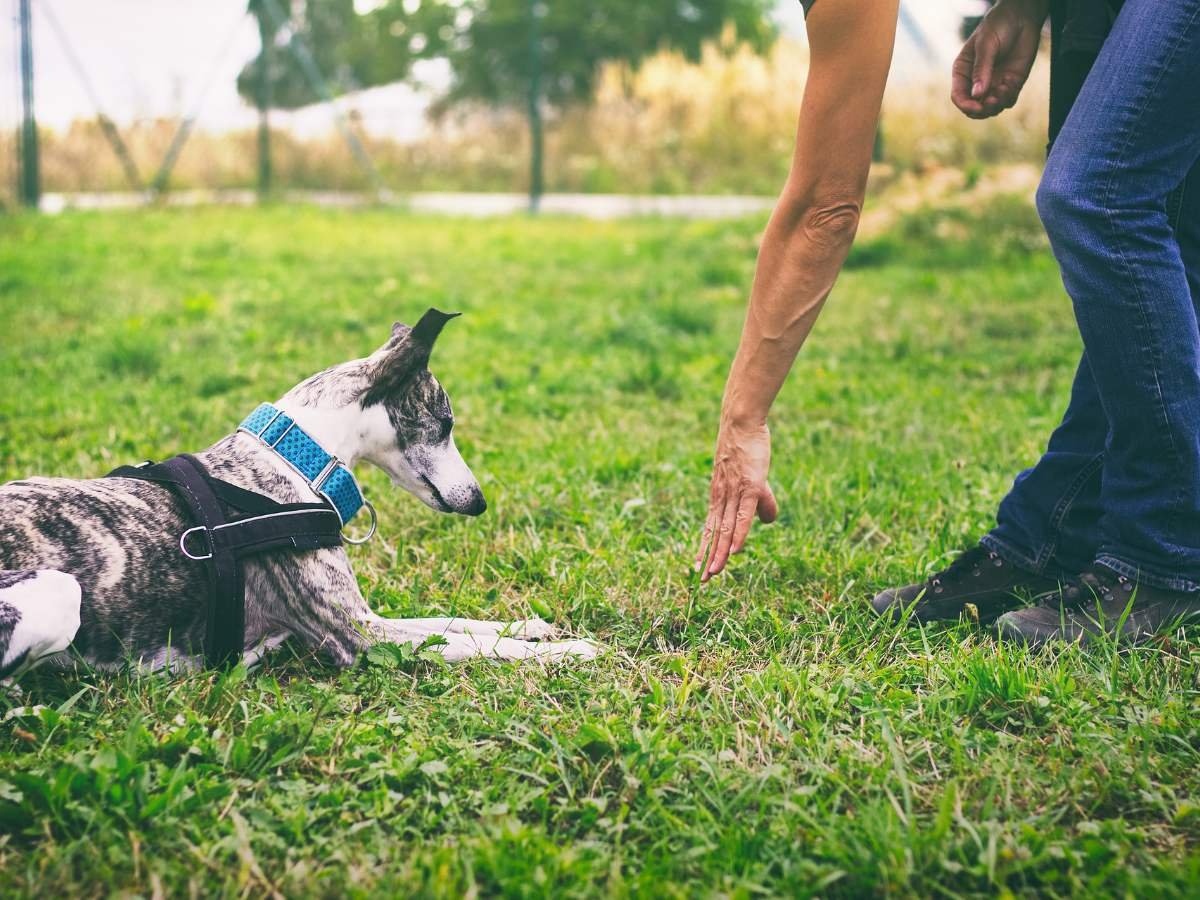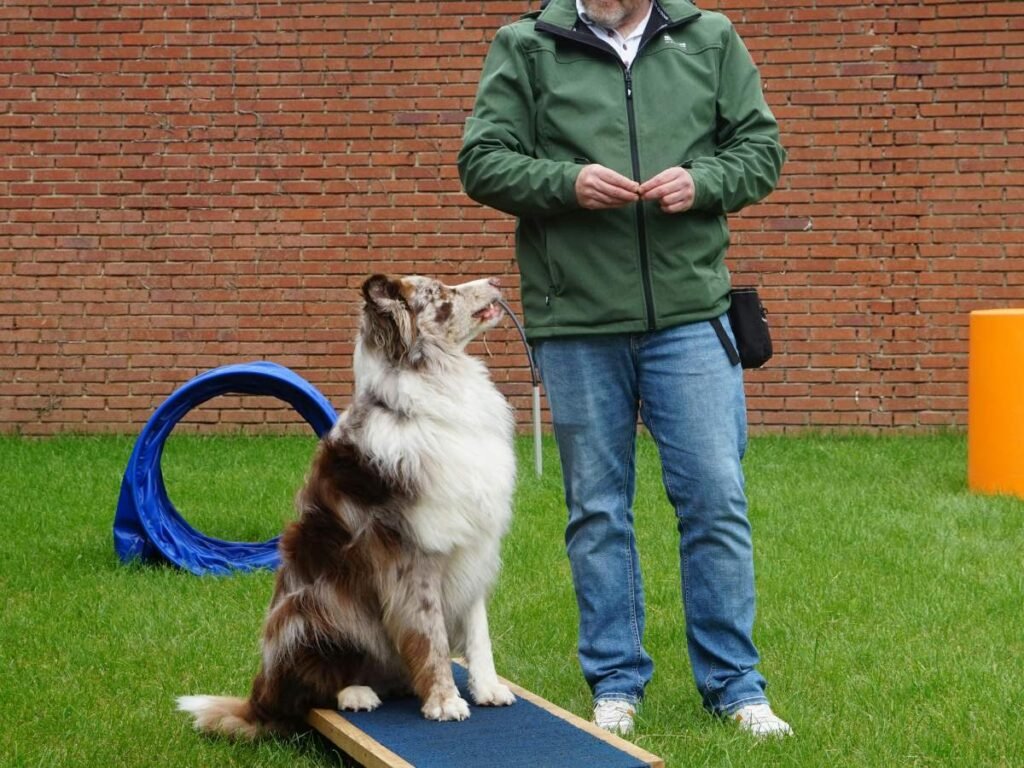
Suppose, in your family, one family member tells the dog to “sit,” another says “down,” and someone else uses “sit down.” The result? A confused pup staring blankly at everyone. This is one of the most common reasons dog training progress slows down. Consistency is the secret ingredient that makes obedience training effective. Mastering the basics of dog training, such as clear and consistent commands, is essential before moving on to more advanced skills.
For dog parents in North York, Toronto, understanding how and why consistent commands matter can make the difference between a frustrated household and a happy, well-trained companion. At Hello Pets Inc., we see this firsthand every day — consistency helps dogs learn faster, behave better, and bond more deeply with their families. The importance of using the same commands cannot be overstated, as it is crucial for effective training. While there are other ways to approach dog training, maintaining consistency in commands remains the foundation for success.
Dogs don’t understand English the way humans do. They learn by association. A cue (your word or hand signal) predicts a consequence (reward, praise, release). When that cue stays the same, the association strengthens. When cues change—“sit,” “sit down,” “park it”—your dog has to re-solve the puzzle every time, which slows progress. There are various techniques to maintain consistency in dog training, helping you teach your dog more effectively and build better habits.
Consistency works across three pillars:

Consistent commands in dog training offer many benefits, such as improving your dog's manners, strengthening your communication, and making learning more effective.
Take note of your training habits and any mistakes you make, as tracking these details can help you improve your dog's progress.
Even the most loving owners sometimes make small mistakes that confuse their pets:
Avoiding these mistakes and being aware of them helps ensure your dog has learned the correct behaviors and maximizes results from your dog training sessions in North York.
Read More About: Top 10 Mistakes Dog Owners Make During Dog Training in North York, Toronto (And How to Fix Them)

1. Create a household command list. Put it on the fridge. For each behavior, write the exact word, hand signal, and criteria. Everyone uses the same script. Following this plan takes commitment from the whole family to ensure consistency and success.
2. Use a release word. “Free” or “OK” ends a position. This tells your dog when they’re done and prevents self-releasing.
3. Train in tiny sessions. Two to five minutes, multiple times per day. Short sessions beat long marathons, especially in city environments with frequent interruptions.
4. Rotate environments on purpose. Practice “sit” at the front door, elevator lobby, parking area, and near a quiet sidewalk. Keep cues identical while the location changes.
5. Rehearse real-life moments. Practice “wait” at doorways, “place” when guests arrive, and “heel” in tight condo corridors. These are North York realities—train for them.
6. Encourage your family to continue practicing these steps daily to maintain your dog's skills and reinforce good habits.
7. For even greater consistency and support, consider enrolling in a structured dog training program that offers a relationship-based approach and community guidance.
If your dog struggles despite your efforts, a professional dog trainer can help reset routines. At Hello Pets Inc., our trainers offer both private lessons and group classes to meet different needs, specializing in structured obedience sessions that reinforce consistent communication between you and your pup.
Commands stick best when your dog can practice them in multiple settings. A quiet living room is a great place to start, but once your dog masters a command, it’s time to test it in busier areas.
At Hello Pets, we reinforce training principles across all services—whether your pet is boarding, in daycare, or being groomed at our store location.
When a dog consistently receives the same cues and rewards, they gain confidence. Consistency also helps strengthen the relationship between dog and owner, building a foundation of mutual respect and trust. Confident dogs are less likely to show anxiety, aggression, or unwanted behaviors.
For example, if your dog always knows that “heel” means walk beside you, they won’t feel confused or insecure when walking near traffic or crowds in Toronto.
Consistency isn’t just about rules—it’s about creating a safe emotional space for your pet. The joy that comes from seeing your dog grow in confidence and trust is one of the most rewarding parts of training.
At Hello Pets Inc., we believe training goes hand-in-hand with overall pet care. That’s why our services complement one another:
Whether you’re focusing on obedience, hygiene, or socialization, we’re here to support your pet’s full well-being.
Here’s a simple routine you can follow daily to reinforce commands:
This routine, combined with professional one-hour training sessions at Hello Pets, ensures long-term success.
Imagine the joy of seeing your dog respond eagerly, not just as a pet, but as your loyal friend. Remember the excitement and pride you felt training your first dog—building that special bond is possible every day.
In the end, consistent dog training in Toronto is about clarity, patience, and repetition. By sticking to clear commands and reinforcing them daily, you’ll build a stronger bond with your dog while ensuring their safety and happiness. Remember to continue practicing consistent commands to maintain and strengthen your dog's skills over time.
If you’re ready to take obedience training to the next level, join our comprehensive training program at Hello Pets Inc. in North York. Our experienced trainers, groomers, and daycare staff are here to make sure your pet is not only well-behaved but also well-loved.
Explore our services:
Puppies can begin basic training as early as 8 weeks old. At Hello Pets Inc., we offer sessions suitable for both puppies and adult dogs, including beginner classes that focus on foundational skills and socialization.
Yes! With consistent practice, even senior dogs can master new behaviors. It's important to consider your dog's individual needs and personality when introducing new commands or environments.
Most dogs start showing progress within a few weeks of consistent practice. Reliable obedience also depends on training your dog to respond well around any person and in different situations.
Absolutely. Consistency across family members is key to preventing confusion and maintaining control during obedience training.
Yes, a clean, comfortable dog is more focused and responsive. Our dog grooming services complement obedience training beautifully.
Both are important. Professional dog training provides structure, while at-home practice ensures commands stick.
Start by practicing commands in a quiet environment, then gradually introduce distractions. Reward your dog for staying focused and learning to ignore other dogs or people. Consistent practice helps your dog remain calm and attentive in any situation.
Introduce new commands or environments slowly and positively. Use treats and praise to encourage your dog, and allow time for your dog to adjust. Gradual introduction helps build confidence and reduces stress.
If your dog shows signs of fear, such as cowering or submissive urination, focus on building trust and confidence. Avoid punishment, and use gentle, positive reinforcement to help your dog overcome fear. Patience and understanding are key to addressing fear-based behaviors.
A beginner should start with basic obedience classes that cover essential commands and socialization. Focus on short, positive sessions and gradually build up as your dog's confidence grows. Structured beginner programs provide a strong foundation for future training.